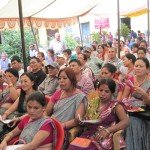The GQGA Project
THE GQGA STORY
In August 1987 a group of students from the National University of Singapore’s Buddhist Society came to Bhante Dhammika with a problem. They said they were often unable to give satisfactory answers when fellow students asked them about Buddhism or when evangelicals challenged them. Bhante asked the students to give him examples of some of the these ‘difficult’ questions and when they did he was dismayed that young, intelligent Buddhists could be so lacking in confidence and in Dhamma knowledge that they would be at a loss over such simple questions. He made a note of all the questions the students had problems with and that evening wrote them out, added some questions he was often asked, gave answers to them and the next day Good Question Good Answer was finished. Some months later the first edition of the book was published and it immediately proved to be popular. Even before the first edition was distributed two people had offered to reprint it. Within a year the book was reprinted several times in Malaysia and a Chinese translation was published. Since then the English edition of GQGA has been reprinted more than 230 times and it has been translated into more than two dozen languages. Because individuals and groups often reprint GQGA without informing Bhante, the exact numbers of copies in English and other languages is uncertain, but it could easily be up to half a million. Over the years Bhante Dhammika has added more questions, often in response to suggestions from readers, and the final and definitive version is now on this web site.
Why So Popular?
Recently someone asked Bhante Dhammika why he thought GQGA has proved to be so popular and he gave this answer. “I think firstly because it’s not too big. Secondly it has few technical terms, Sanskrit or Pali, which some people find intimidating. Another reason is that it is aimed at the beginner and there are many people out there with a beginner’s interest in the Dhamma. I think the question-answer format makes it easy to read and this may give it a certain appeal. And finally I think the book asks the type of questions people often ask about Buddhism and, I hope I will not be accused to boasting here, I think I give clear, brief and convincing answers to them.”
The GQGA Project
2017 will be the 30th anniversary of GQGA and to celebrate this Bhante Dhammika and his supporters and friends have set up the Good Question Good Answer Project with two goals. They are; (1) To print and distribute more copies of GQGA than ever before and as widely as possible; and (2) to have GQGA translated and available in 50 languages by 2017.
HOW YOU CAN HELP
There are four ways you can help us achieve our worthy goals.
Keep in Touch. Let us know what you think about GQGA. Tell us where you found a copy. Give us ideas about how it could be improved. Send us the address of a Buddhist group who might like some copies. We appreciate hearing from you, it inspires and encourages us. See What Our Readers Say.
Translate GQGA. The more GQGA appears in different languages the more the Dhamma becomes available to people. Translations don’t have to be published in book form, they can be published online or as articles in journals or magazines.
Make a Donation. Because we have almost no administrative overhead nearly all your donation will be used to promote the Dhamma, by either (A) reprinting GQGA, or (B) posting copies around the world. You can have your name included in a donor’s page at the back of the book (minimum donation US $ 20 or equivalent) or you can have it reprinted in the name of a departed loved one.
Distribute Copies of GQGA. One enthusiasts, a taxi driver tells us he always has a copy of GQGA in the back of his taxi and that his passenger often browse through it or takes it. The manager of a backpacker hotel in Australia puts a copy of GQGA in every room. Another Dhamma friend always takes a few copies of GQGA when she travels overseas and gives them to the people she meets. Several years ago Bhante received a letter from so a lady in the Seychelles saying that she had been given a copy and would like more. The wider GQGA is spread the better, and it’s something everyone can do to promote the Dhamma.
Publicize GQGA on the Web
Put a link to the GQGA wed site on your blog, mention it to your friends, put up a notice to it on your Buddhist group’s notice board or in your group’s newsletter.



